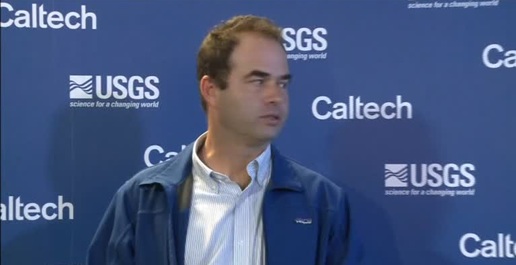
(Reuters) A magnitude 8.3 earthquake hit off the coast of Chile on Wednesday (September 16), shaking buildings in the capital city of Santiago and flooding some coastal areas under a tsunami warning.
At least three people were killed by the quake about 280 km (175 miles) north of Santiago, the biggest earthquake since 2010 to hit the world’s top copper producer.
Speaking to reporters in southern California, Caltech seismologist Mark Simons said that those affected by the earthquake needed to remain vigilant, especially if the 8.3 magnitude portends a larger seismic event.
“But the bigger issue is I suppose this could be a foreshock, there’s always that possibility one in ten big earthquakes are foreshocks of a bigger earthquake and there can also be other processes such as landslides that may happen in a delayed fashion, so usually the wise thing is to be vigilant for awhile after one of these events of course even a smaller aftershock frequently we get aftershocks of a magnitude even smaller so that’s still a 7.3, that’s still a very significant earthquake – it can cause local tsunamis as well, so people will be vigilant for awhile now.”
The quake, which was felt as far away as Buenos Aires in Argentina, also damaged homes, buildings and injured several people.
The coastal town of Coquimbo was hit by waves of up to 4.5 meters (15 feet) after the earthquake, Chile’s navy said.
“The potential for damage is significant, as we saw in Japan it may be induced, causes some sort of domino effect and something else fails so that’s something you always have to be concerned with, so yes, this is a very big earthquake, and a very important earthquake, it will also be very important scientifically. That’s a story for further down the line. That’s not something we’re really concerned about right now,” said Simons.
Tsunami advisories were issued for parts of South America and as far away as Hawaii, California and French Polynesia.
Tsunami waves of 1 meter to 3 meters (3 to 10 feet) are possible for French Polynesia starting at 0800 GMT, said the Pacific Tsunami Warning Center.
Waves of 15 to 20 cm (6 to 8 inches) hit the Peruvian coast, and waves of less than 1 meter were expected in Hawaii around 3:06 a.m. Hawaii Standard Time (1306 GMT) on Thursday, the Pacific Tsunami Warning Center said.
Less than an hour after the initial earthquake, three aftershocks all greater than magnitudes 6.1 struck the region and smaller quakes continue to shake the area, USGS reported.







